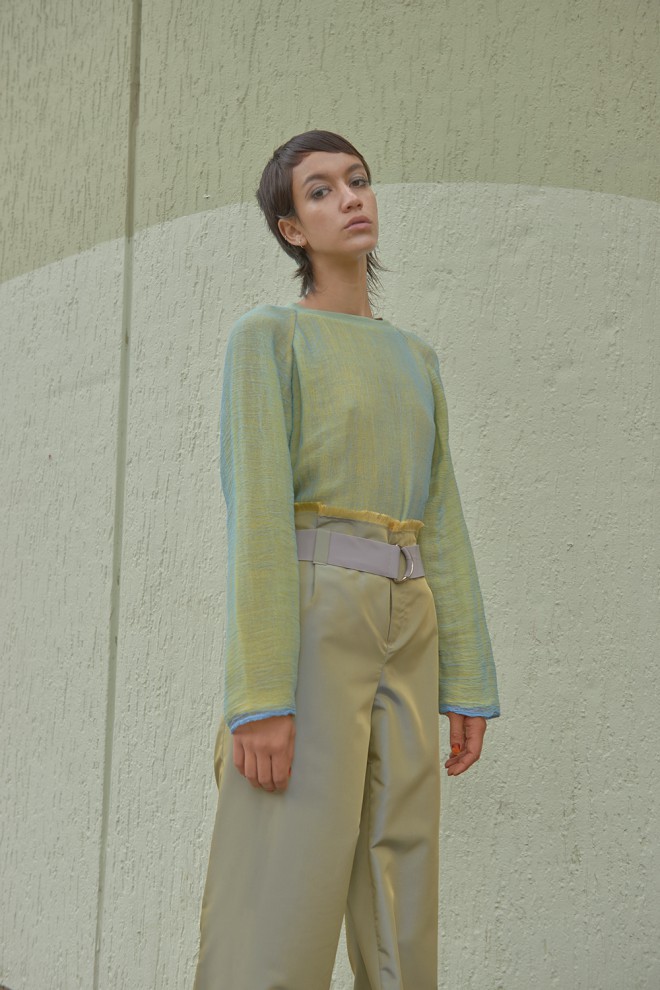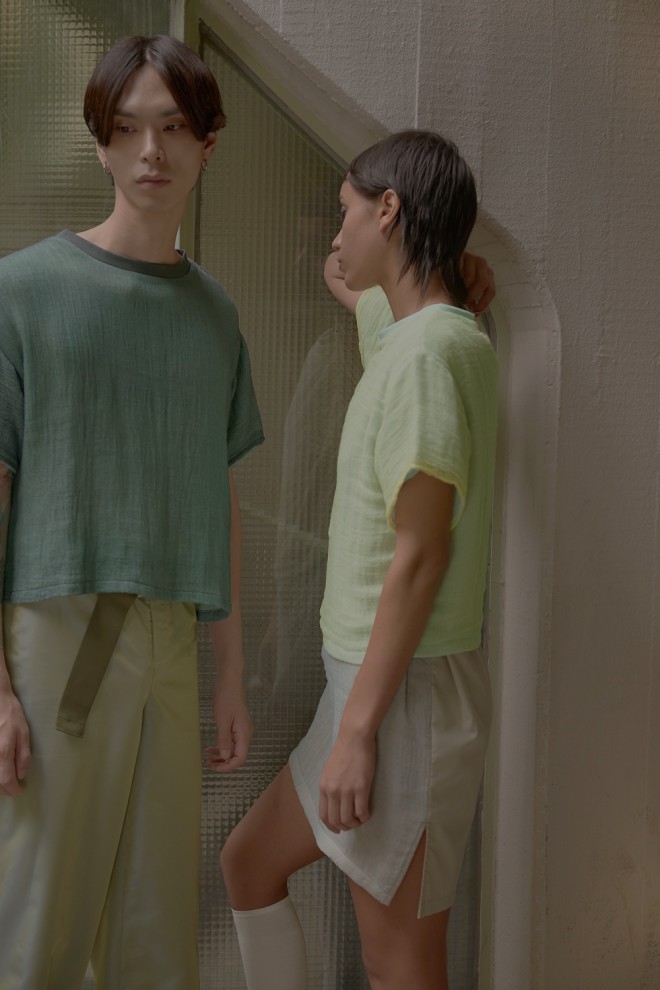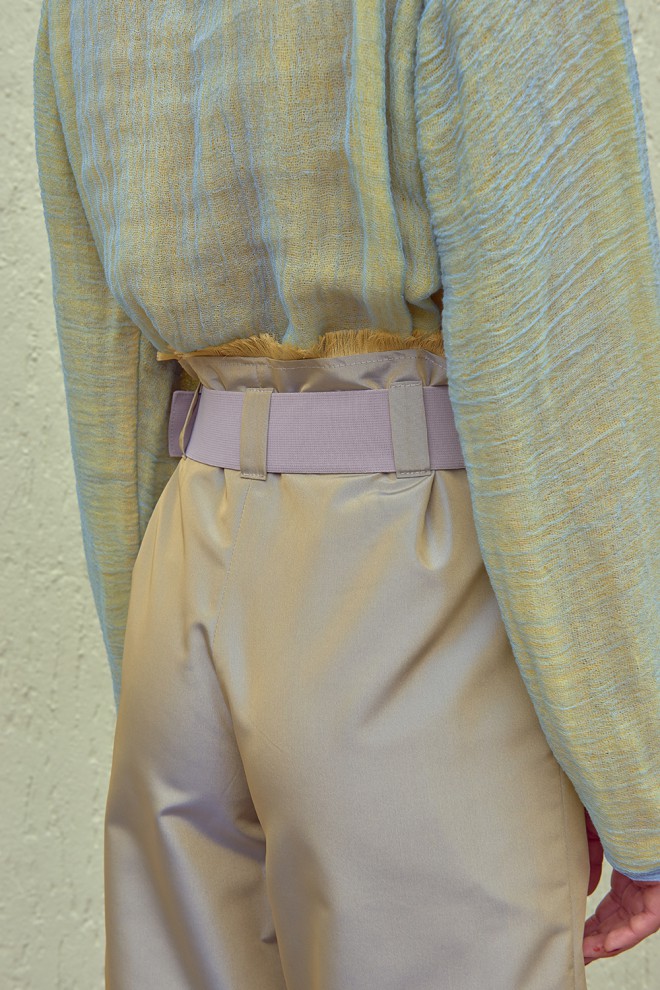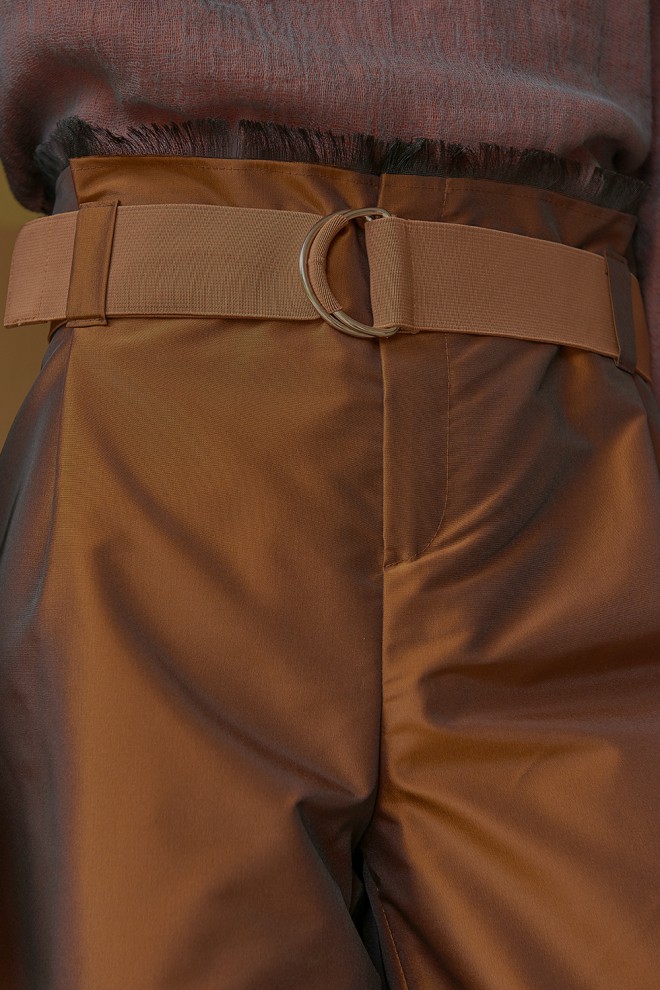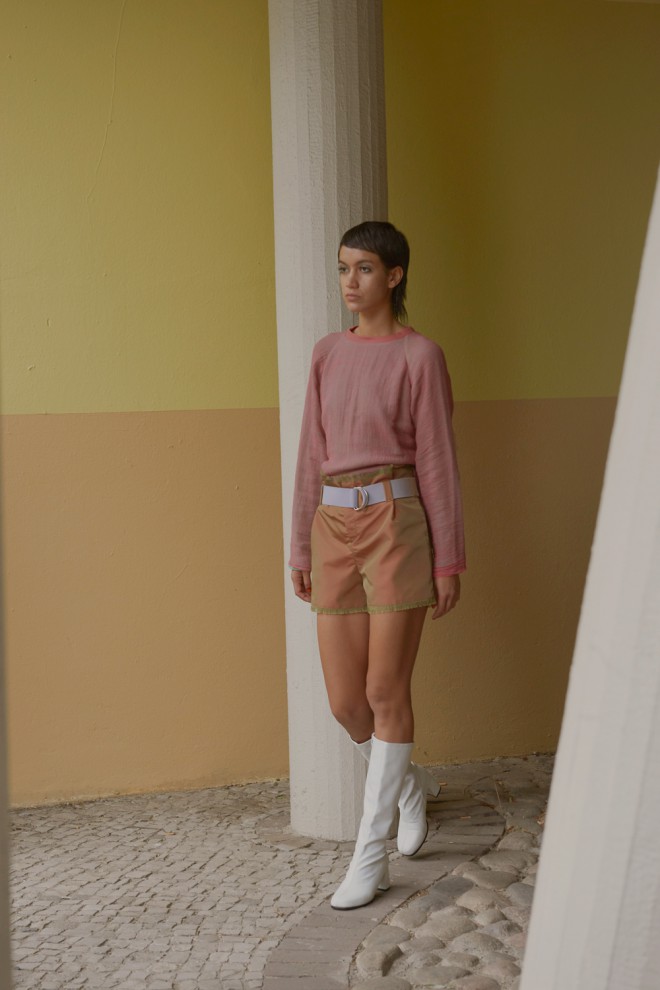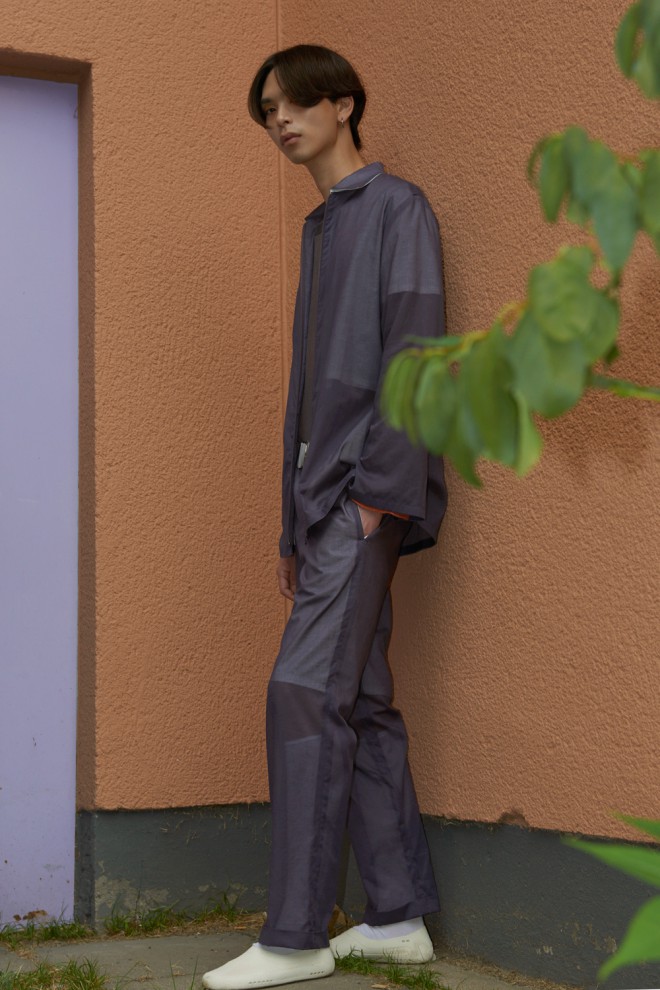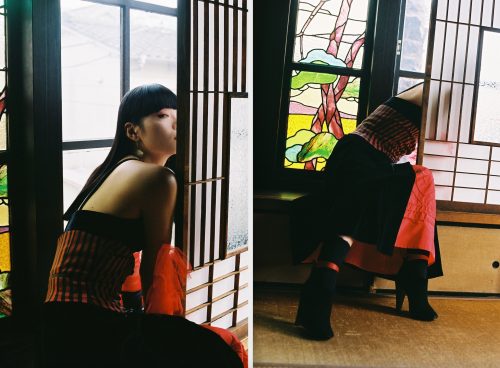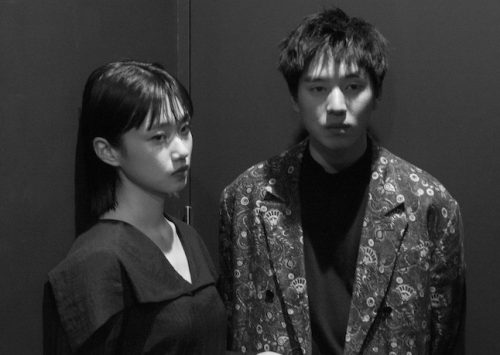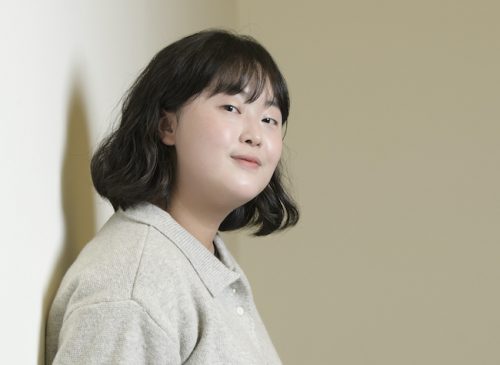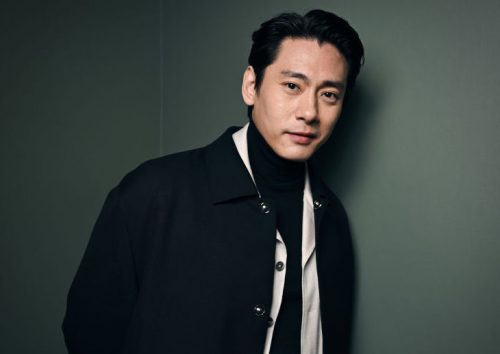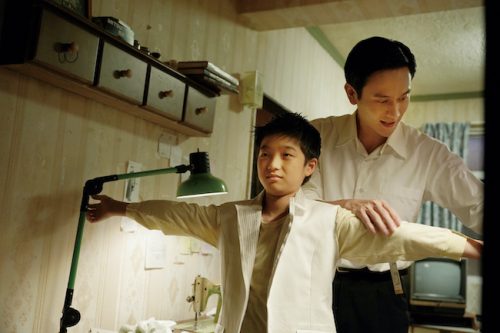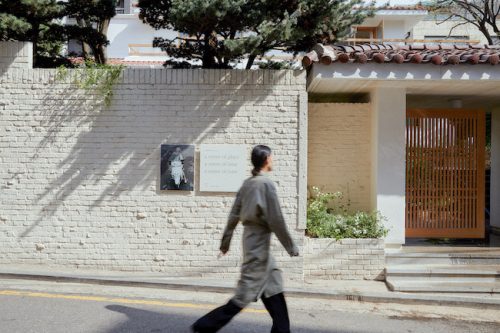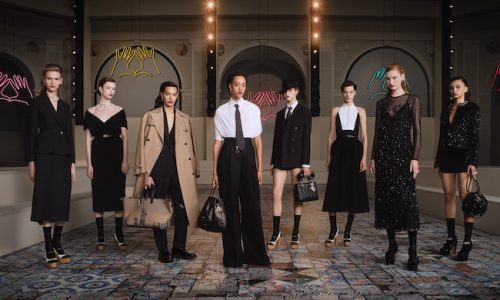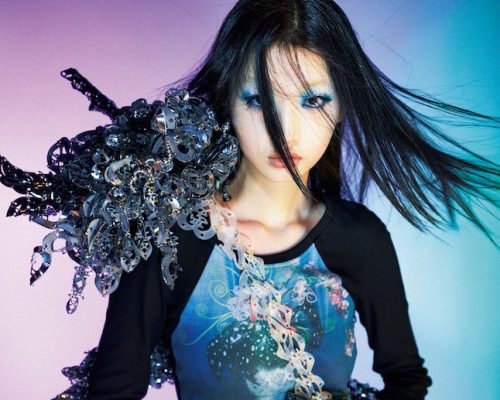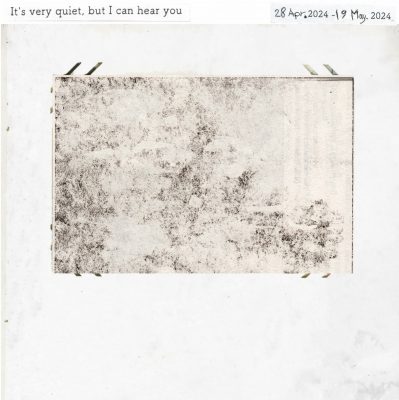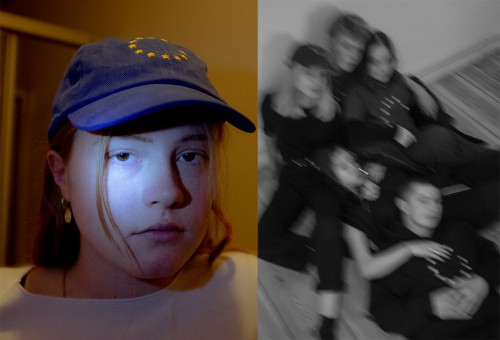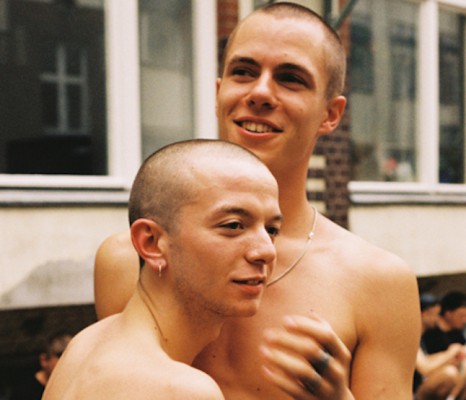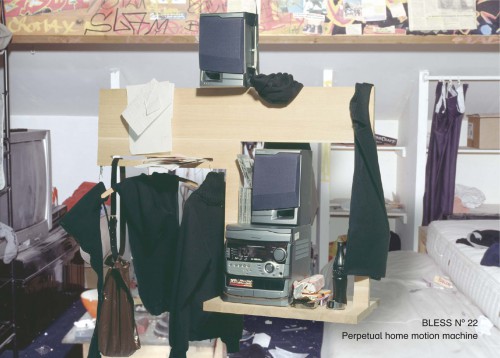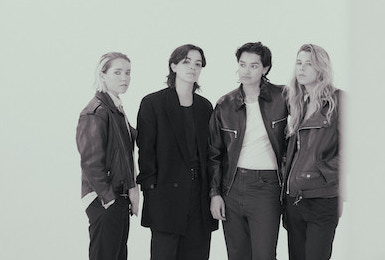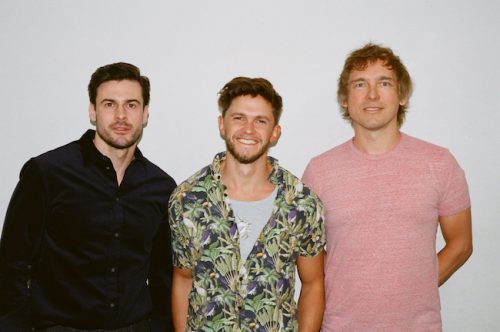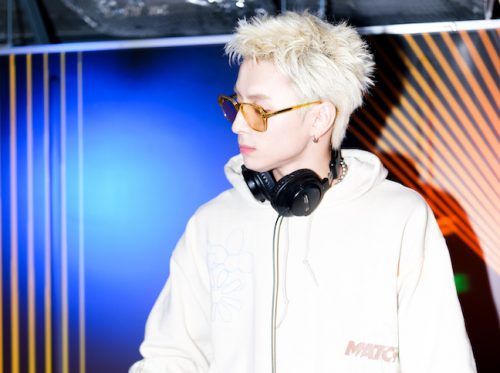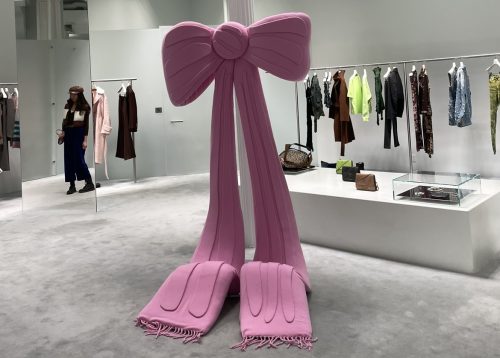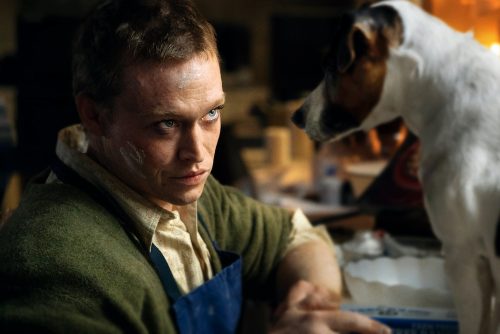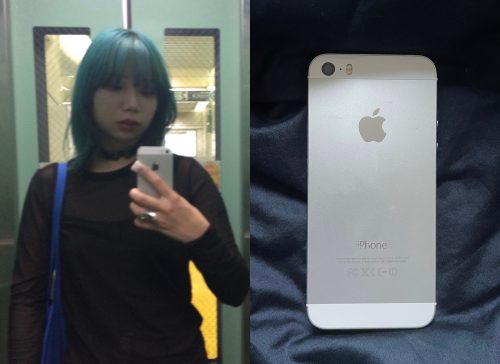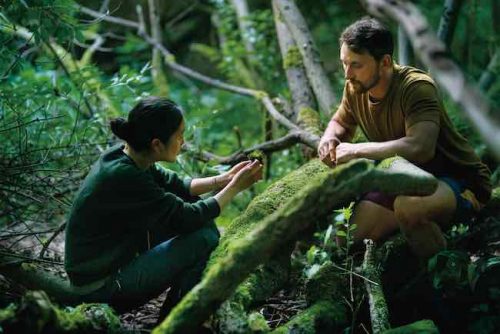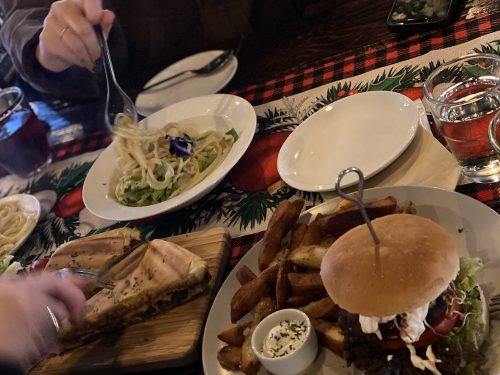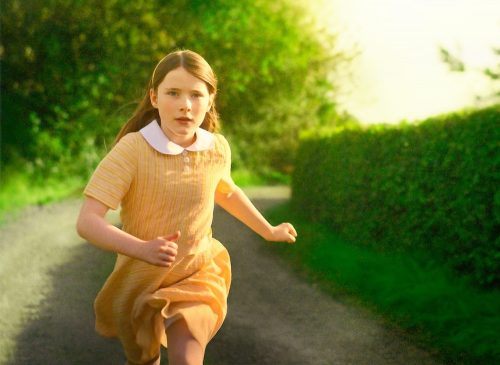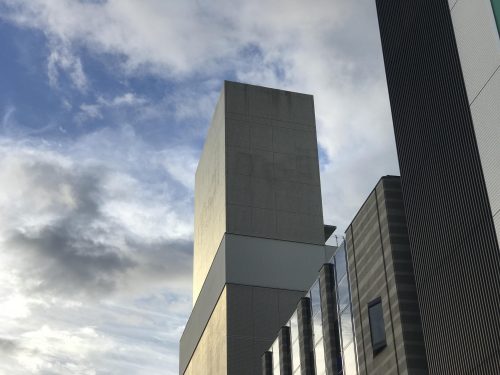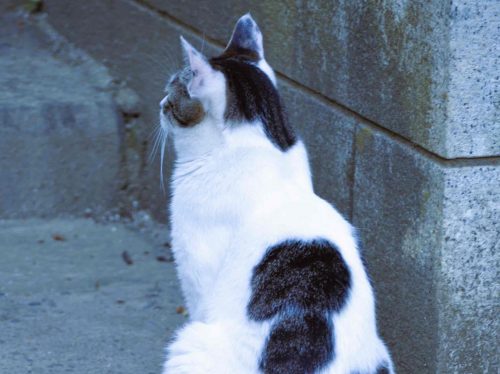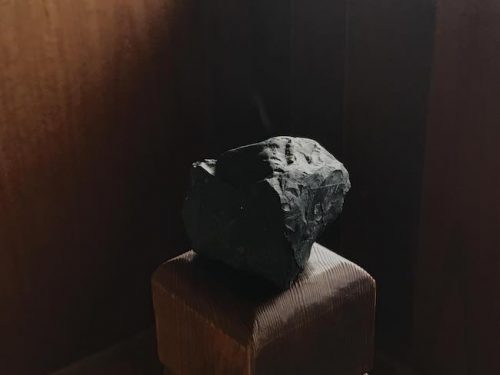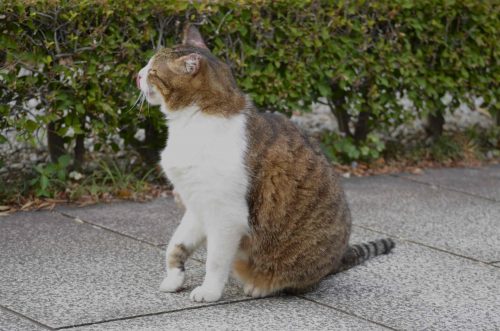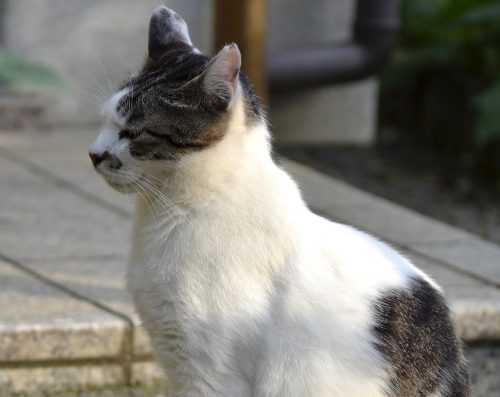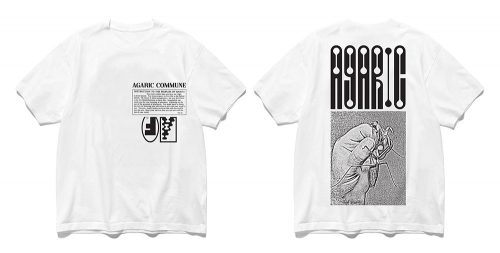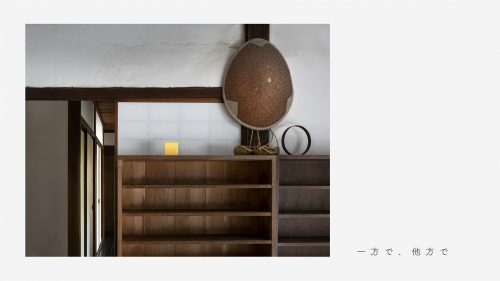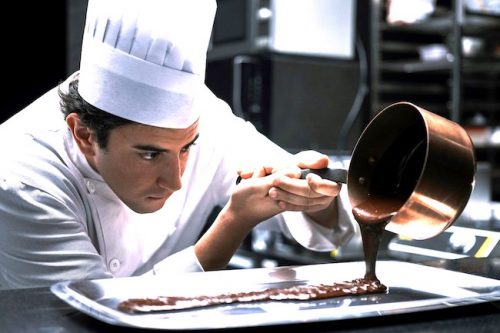ルーズフィットなシルエットとニュートラルなカラーパレット。ポーランド人デザイナーAla Sowiar(アラ・ソヴィアー)の紡ぎ出すHalo Labels(ハロ・レーベルズ)は、わたしたちの心と身体にそっと寄り添う。ビデオアート出身の彼女は、ファッションを主軸に自身のアイデアをさまざまな形へと翻訳する道を選んだ。現在はドイツ・ベルリンを拠点に、故郷であるポーランド・ポズナンで制作を行っている。9月に開催されたニューヨーク・ファッション・ウィーク参加を経て、新たな扉を開いたばかりの彼女に日本初インタビューを敢行。彼女が生み出すクリエイションの背景には、わたしたちの日常をちょっと豊かにする心地いいエッセンスが散りばめられていた。
A loose silhouette and a neutral color palette. Halo Labels, which Polish fashion designer Ala Sowiar spins out gently, nestles close to our body and soul. Ala, who originally started with a video art background, chose to pursue the path of converting her ideas into various forms of fashion. She is now based in Berlin, Germany but creates her pieces in her hometown, Poznań, Poland. Having been invited to New York Fashion Week this past September, she has just recently opened new doors – we went ahead and hosted her first interview in Japan. Behind her creations, we saw a scattered, snug essence that made our everyday lives a little lusher.
ーー大学ではビデオアートを学び、そこからファッションへ。Halo Labelsはどのように生まれたのでしょうか?
Ala「初めて服を作ったのはビデオアートのコスチューム。デジタルな映像とは違う何かフィジカルなことに取り組みたくて。テキスタイルにも興味があったから大学で授業を受けてたの。ビデオ、ファッション、テキスタイルーこの間にどんな繋がりがあるのかいつも探していた。その中からファッションをメインに選んで始めたのがHalo Labels。初めて小さなコレクションを作ったのが2014年、よりファッションにフォーカスするようになったのは2016年から」
–You studied video art in college, and then went into fashion. How was Halo Labels born?
Ala: “I first made clothing for a costume in video art. I wanted to be involved in something physical, unlike digital videos. I was also interested in textiles, so I had taken classes in college. I always looked for connections between videos, fashion, and textiles. Among those, I picked fashion as the main thing and started Halo Labels. I made my first small collection in 2014, and started focusing more on fashion since 2016.
ーー9月に開催されたニューヨーク・ファッション・ウィークSS19で披露したコレクションについて教えてください。
Ala「”失われた未来への憂鬱(Melancholy for the future that were lost)” ”決して起きない未来(future that never happen)”をヒントに、未来に対してとても楽観的なヴィジョンを持ってた60年代に戻って、レトロフューチャーなコレクションに仕上げたの。コレクションのアイデアは”Hauntology”のコンセプトを参考にしてる。透明、シャイニー、ユニフォーム・ルックといった60年代が想像した失われた未来、フューチャリスティックな要素を取り入れてみた。未来と言っても、来季コレクションではなくて60年代のように10年、20年、もっと先をイメージしたもの。ファッションを作り出すことはいつもちょっとだけ未来の可能性を考える未来学のようなもの。アイデアで遊んで未来を予想する、とても楽しく制作できたわ」
–Please tell us about the collection you presented at New York Fashion Week SS19 in September.
Ala: I made it a retro-future collection, going back to the optimistic vision towards the future that they had in the 60s, with themes like “melancholy for the future that was lost” and “a future that will never happen” as hints. The idea for the collection referred to the concept of Hauntology. I tried to incorporate futuristic elements that they imagined in the 60s such as transparent and shiny uniform looks. I imagined something further into the lost future. Not a next season collection but something 10, 20 years from now. I got to play with ideas and predict the future that like they did in the 60’s. Creating fashion is always a bit like futurology, thinking about probable near futures. I had a lot of fun while creating it.”
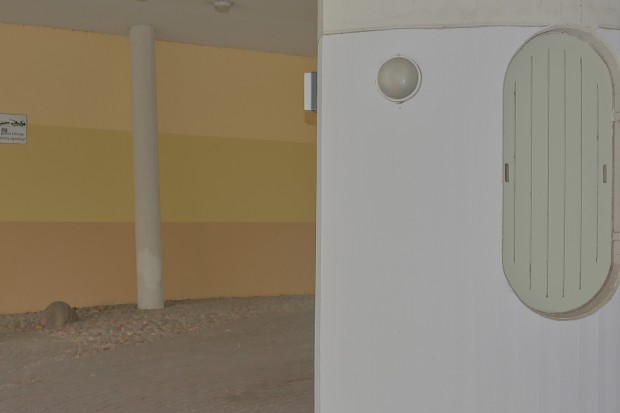
ーールックブックのロケーションもコレクションにぴったりですね。
Ala「フューチャリスティックな現代建築で撮影したいって最初から思ってて。バウハウスももちろん浮かんだけど、それだとあからさまなものになっちゃう。だから丸いシェイプの建物を探したの。そこで見つけたのが建築家ヒンリッヒ・バラー(Hinrich Baller)。たまたま気になった建物の住所をリサーチして、それが彼の作品と知ったわ。オーガニックなシェイプで宇宙船のようなコズミック要素もある、まさにレトロフューチャーにぴったりだった」
ーーコレクション制作では、何を参考にしましたか?
Ala「いろいろあるけど、スタンリー・キューブリックの『2001年宇宙の旅(1968年、原題:2001:A Space Odyssey)』。20歳のときに見たんだけど、最近映画館で70mm版を鑑賞する機会があって。とても素晴らしかったわ。すでにレトロフューチャーのアイデアがあったから、偶然この作品を再鑑賞してとても参考になったの」
ーーせっかく映画の話が出たので、好きな映画を教えてください。
Ala「たくさんあって選べないけど、60~70年代のクラシック映画が好き。ファッション系だとヴィム・ヴェンダースの『都市とモードのビデオノート(1989年、原題:Aufzeichnungen zu Kleidern und Städten )』。デザイナー山本耀司のインタビューとビデオに関するエッセイをヴィムがビデオカメラで撮った作品なんだけど、わたしにとってかなり重要なファッションフィルム。あと、ジュリー・ダッシュ(Julie Dash)の『自由への旅立ち(1991年、原題:Daughters of the Dust)』。アフロアメリカンカルチャーの話でヴィジュアルがとても美しいの」
–The lookbook’s location is also perfect for the collection.
Ala: “I knew I wanted to shoot at a futuristic, modern architecture site from the beginning. I thought of the Bauhaus too of course, but that would make it too obvious. So I looked for a building with a round shape. Then, I found the Berliner architect, Hinrich Baller. I researched a building’s address that I had been interested in, and found out that it was his work. It had an organic shape and a cosmic element to it, like a spaceship. It was perfect for retro-future.”
–What did you refer to upon creating your collection?
Ala: “There’s a lot, but one is Stanley Kubrick‘s 2001: A Space Odyssey. I saw it when I was 20, but I recently had the chance to watch it in theaters in a 70mm version. It was spectacular. Since I already had a retro-future idea, it was a great reference that I coincidentally got to re-watch.”
–Since we’re talking about films now, tell us about your favorite films.
Ala: “I can’t choose because there’s too many, but I like classic films from the 60s and 70s. For fashion related films, I like Notebook on Cities and Clothes (Aufzeichnungen zu Kleidern und Städten) by Wim Wenders. It’s a film that Wim shot on his video camera, about an interview with designer Yohji Yamamoto and an essay on videos. It’s a pretty important fashion film to me. Also, Julie Dash’s Daughters of the Dust (1991). It’s a story about Afro-American culture and the visuals are beautiful.”
ーーHalo Labelsはやさしいニュートラルな色彩が印象的です。カラーセレクションについて何か理由はありますか?素材への配慮、あるいは自身の感性なのか気になります。
Ala「色は直感で選んでる。時々ダークな色を選ぼうとするんだけど、最終的に似たようなカラーパレットに落ち着くの。きっとわたしの中に何かがあって、最終的な決定はいつもその直感に従ってる。上手く説明できないんだけどね。黒が使えたらと思うけど、黒は使えない。色としては好きだし、ほかの色とのコントラストを作るのに有効だけど、シンプルすぎるしHalo Labelsの翻訳手段としては使えないかな。黒よりは鮮やかな色を使いたい。でもわたしの中に黒を探求したいという願望もあるから、今後ダークカラーのコレクションを作るかもしれないわ」
ーー鮮やかといっても、ヴィヴィッドなカラーとはまた違いますよね。
Ala「強い人工的な色を使わずに、自然から見つかる色を選んでる。自然だって花や木、草は鮮やかで強い色を持ってるけど、ニュートラルな色とバランスを取れる色だから。個人的に人工的な色は着たくないかな」
–Halo Labels’ soft and neutral colors leave an impression. Do you have a reasoning behind your color selections? I’m interested whether it comes from your attention to materials, or from your sensibility.
Ala: “I choose colors by intuition. I sometimes try to choose dark colors, but I ultimately settle for similar color palettes. There’s probably something inside me, and my ultimate decision always follows that instinct. Yet, I can’t explain it very well. I think, “If I could use black…” but I cannot use black. I like black as a color, and it’s effective to use with other colors to create contrast, but it’s too simple and I don’t think I can use it as a measure for Halo Labels. I want to use brighter colors than black. However, there is a desire in me that tells me to explore black, so I may make a collection with dark colors in the future.”
–The ‘bright’ colors you mention aren’t necessarily vivid colors. It’s a bit different.
Ala: “I don’t use strong, artificial colors. I choose colors that can be found in nature. Even in nature, flowers, trees and grass have bright and strong colors, but they are all colors that can be balanced with neutral colors. I personally don’t want to wear artificial colors.”
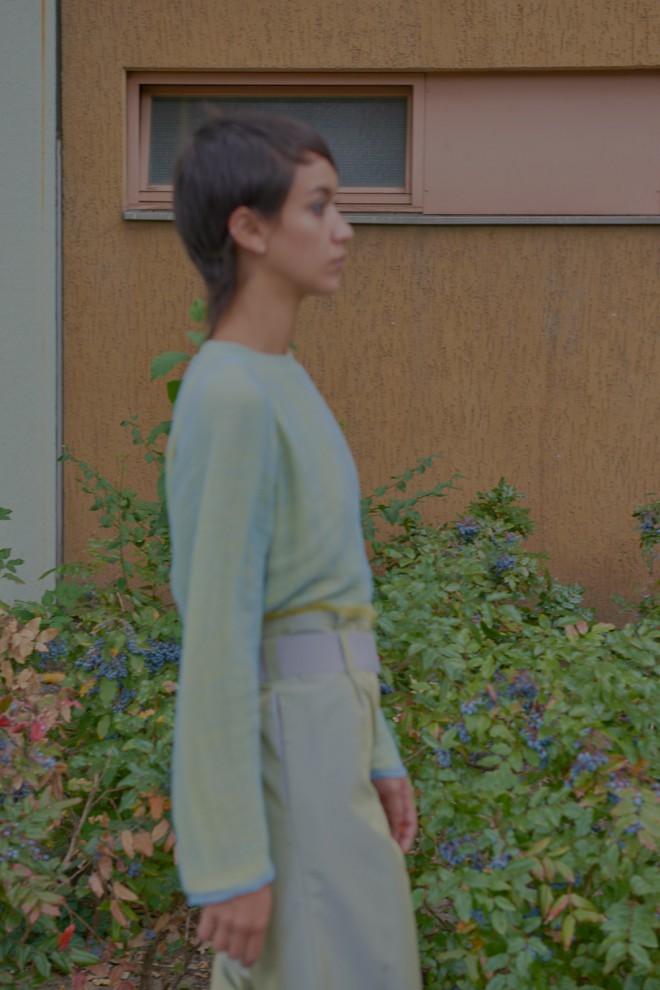
ーー「人の身体と服の間に無意識の絆が生まれ、柔らかい繊維が感情を引き出し、思い出を呼び起こす」など、服やテキスタイルと身体の向き合い方に対する考え方が大変興味深いです。
Ala「記憶が服やテキスタイルと繋がっていることはとても大事。忘れられがちだけど、人類が進化する上で服とテキスタイルはとても本質的な最初のクラフトの1つ。服は体を守るものであり、心地よさを感じるものとして作られたーこれこそが服自体が持つコアな記憶なの。いまでは服の存在が当たり前すぎて、単なるファッションやトレンドになってる。でもあまりファッションを気にしていない男性でも、いつもお気に入りの同じTシャツを着てたりするでしょ?あと小さい頃から愛用してるブランケットと一緒に寝ると落ち着くとか。それは心地いいというパーソナルな記憶が作用してるから。コレクションでいうとわたしのデザインは、簡単に着れて身体やいろんな場面にフィットするもの。わたしが心地よく感じる直感的でパーソナルなワードローブでもあるわ」
ーー心地いいというパーソナルな記憶、とても納得できますね。ファッション、デザイン、音楽、哲学など少し東洋の影響を受けているように感じます。
Ala「イッセイ・ミヤケは大好きなデザイナーだし、最近コスチューム・アーティストひびのこづえも見つけたわ。最初は日本のファッションがきっかけ、それから彫刻家兼インテリアデザイナーのイサム・ノグチとか別のフィールドにも興味を持ったの。東洋は物質性と精神性を1つのものとして取り扱ってるイメージ。日本はお茶、テキスタイル、陶芸を作る1つ1つのプロセスに気持ちを込めるなどたくさんの注意を払ってる。西洋はアイデアとフィジカルを別々に考えるから、これが違いだと思うの。東洋は陰陽のように、別々のものが共存してる。例えばフューチャリスティックでありつつ、アートやクラフトなど伝統を守っているところとか」
–“There is an unconscious bond that is born between a person’s body and their clothes. The soft fibers bring out emotions, and evoke memories.” – Your words and your thoughts on clothing and textiles and its relationship with the body are very interesting.
Ala: “It’s crucial that memories connect with clothing and textiles. It’s often forgotten, but clothing and textiles are one of the essential crafts in the evolution of human beings. Clothing is meant to protect the body, and was made to be something you feel comfort in – this is the very thing, the core memory that clothing itself holds. Today, the presence of clothing has become such a normal thing that it’s simply fashion or a part of trends. But even men who don’t really care for fashion can always be wearing his same, favorite T-shirt. Or the sense of comfort you get from sleeping with your favorite childhood blanket. That’s because of the effect of a personal memory that makes you feel comfortable. In terms of the collection, my designs are easily worn and fit within various bodies and situations. It’s also a wardrobe that I feel is comfortable, intuitive and personal.”
–Personal memories of comfort are very understandable. It feels as if your fashion, music, and philosophies were a little influenced by Eastern oriental culture.
Ala: “Issey Miyake is one of my favorite designers, and I have recently discovered costume designer Kodue Hibino. At first, I got into Japanese fashion and then grew interest for architect/interior designer Isamu Noguchi and other fields. I have the image that Eastern culture handles materiality and spirituality as one thing. Japan embraces and pays close attention to each step in the process of making tea, textiles, and ceramics. The West brainstorms ideas and physical aspects separately – that is what’s different. In the East, separate things coexist like yin and yang. For example, being futuristic but also following the traditions of art and craftsmanship.”
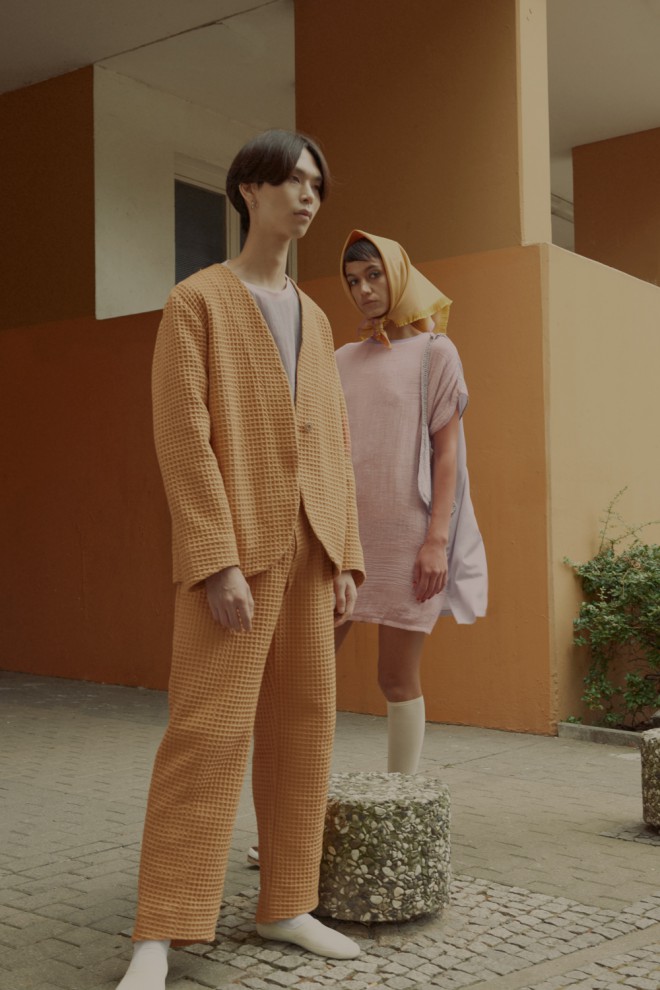
ーーHalo Labelsは流行に左右されないアート色の強いクリエイションが魅力的です。アプローチの仕方がファッションインダストリーとは違いますよね。
Ala「いつもファッションを背景に乗せるようにしてるの。テキスタイルの意味、ストーリーをね。アート、サイエンス、自然、哲学のようにファッションというフィールドの外にあるアイデアをコレクションとして再構築し、服や写真、ビデオといったパッケージに翻訳する。だからアーティスティックに感じるし、その後ろにはアイデアがある。見た目ではなくて、アートピースとしてのアイデア。わたしのカスタマーはアート系の人が多いし、このアイデアに興味を持ってくれるわ」
ーー世間では一般的にユースに熱狂するシーンやストリートファッションが主導権を握っています。そういったシーンとの距離感、バランスをどう思っていますか?
Ala「特に大きなオピニオンはないけど、個人的にストリートスタイルは着ないかな。スニーカーをミックスすることはあるけど、それくらい。ビジネスで考えれば売れるだろうし注目すべきだけど、もうすでに広まっているものにわたしは興味ないの。ストリートのヴァイブとHalo Labelsのヴァイブーこの2つは違うけど、それが結びつくことは考えられるわ。例えばHalo Labelsのアイテムはストリートに合わせられるし、エレガントに見せることもできる」
ーーいろんな場面にフィットする柔軟性がHalo Labelsらしいですね。話は変わって、soundcloudやBerlin Comuniy Radioで公開しているランウェイBGMを交えたプレイリストが、ブランドの世界観にとてもフィットしています。音楽も服と同様に人を心地よくするものですよね。
Ala「そう、ランウェイBGMは話し声や拍手が聞こえて、わたしにとってはナイスなサウンドトラックなの。仕事のBGMにぴったり。エレクトロも好きだけど、アグレッシヴなビートのない環境音楽が好き。Halo Labelsのプレイリストは今後も続けたいな。Berlin Comuniy Radioともまた何か流そうって話してるの」
–Halo Labels’ strong creation of artistic colors that aren’t affected by trends is fascinating. The way of approach is different from the fashion industry.
Ala: “I always put fashion as the background. The meanings of textiles, and the story. I rebuilt ideas outside of the field of fashion such as art, science, nature and philosophy as a collection, and translate them into a package of clothing, photography, and videos. That’s why it feels artistic, and behind that is an idea. An idea not for appearance, but as a work of art. Many of my customers are involved in art, and are interested in this idea.”
–Generally, the youth scene is enthused and street fashion is dominant world-wide. What are your thoughts on the distance kept from that kind of scene, and on the balance of both?
Ala: “I don’t particularly have a big opinion on it, but I personally wouldn’t wear street styles. There are times that I mix sneakers into my outfit, but that’s about it. When thinking in terms of business, it would probably sell and it’s something I should pay attention to, but I’m not interested in things that are already widespread. Streetwear vibes and Halo Labels vibes are different, but I can imagine the two being tied together. For example, Halo Labels items can be paired with streetwear, and can also be presented elegantly.”
–Halo Labels’ and its flexibility, and the fact that it can fit into various situations is representative of the brand. On a different topic, the runway BGM playlist released on SoundCloud and Berlin Community Radio fits perfectly with the brand’s outlook. Music, like clothing, is also something that makes people comfortable.
Ala: “Yes, you can hear voices of people talking and applause in the runway BGM, and to me it’s a nice soundtrack. It’s perfect as a BGM for work. I also like electro, but I like ambient music that doesn’t have aggressive beats. I want to continue with Halo Labels’ playlists. I have even been talking with Berlin Community Radio to stream something again.”
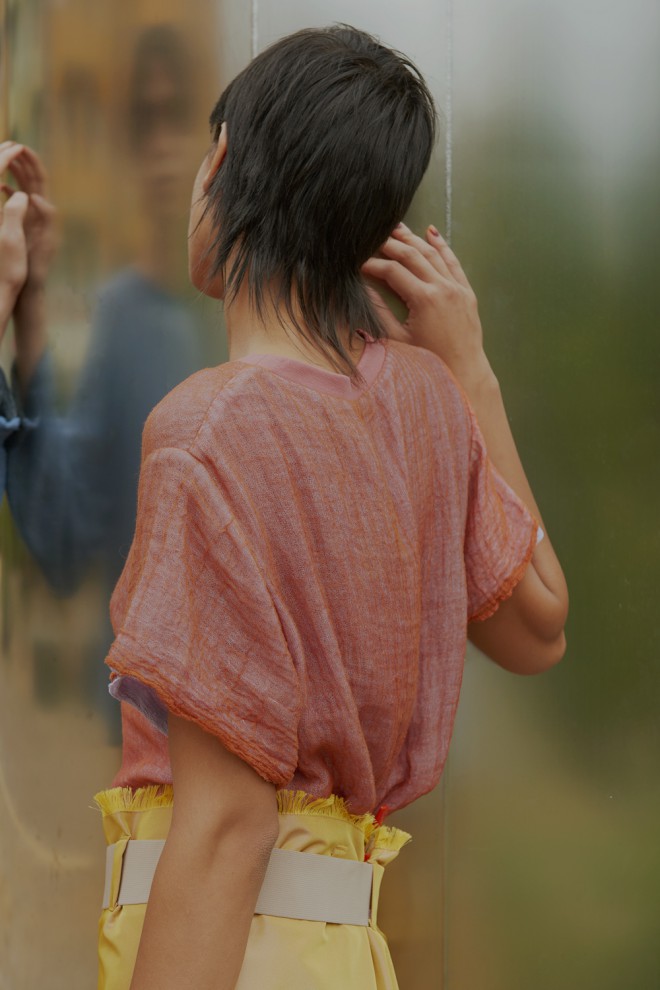
ーーブランドのキャンペーンビデオにも力を入れていますよね。
Ala「2017年にポーランド人映像作家Emilia Kurylowiczと制作したビデオをロサンゼルス・ファッション・フィルム・フェスティバルに出展するわ。9月に開催されるミラノ・ファッション・フィルム・フェスティバルにも。あ、映画の話に戻るけどクリス・マイケル(Chris Marker)の『サン・ソレイユ(1983年、原題:Sans Soleil)』もすごく好き。哲学やアートを織り込んだエッセイ本みたいな作品」
ーーどちらかというと抽象的なドキュメンタリー作品が好きなんですね。
Ala「そう。実験的ドキュメンタリー作家ハルン・ファロッキ(Harun Foracki)の『静物(1997年、原題:Stillleben)』も。こういったオープンエンドで考える余地がある作品が好きなの」
–You also put a lot of effort into the brand’s campaign video.
Ala: “I’ll be holding an exhibit with the video we created in 2017 with Polish videographer Emilia Kurylowicz at the Los Angeles Fashion Film Festival. Also at the Milan Fashion Film Festival, which will be held in September. Oh, going back to our talk about films – I also love Chris Marker’s Sans Soleil. It’s a film that’s like an essay that interweaves philosophy and art.”
–You seem to prefer abstract, documentary films.
Ala: “That’s right. Also experimental documentary filmmaker Harun Foracki’s Still Life (Stilleben). I like works that are open-ended, and leave room for thought.”
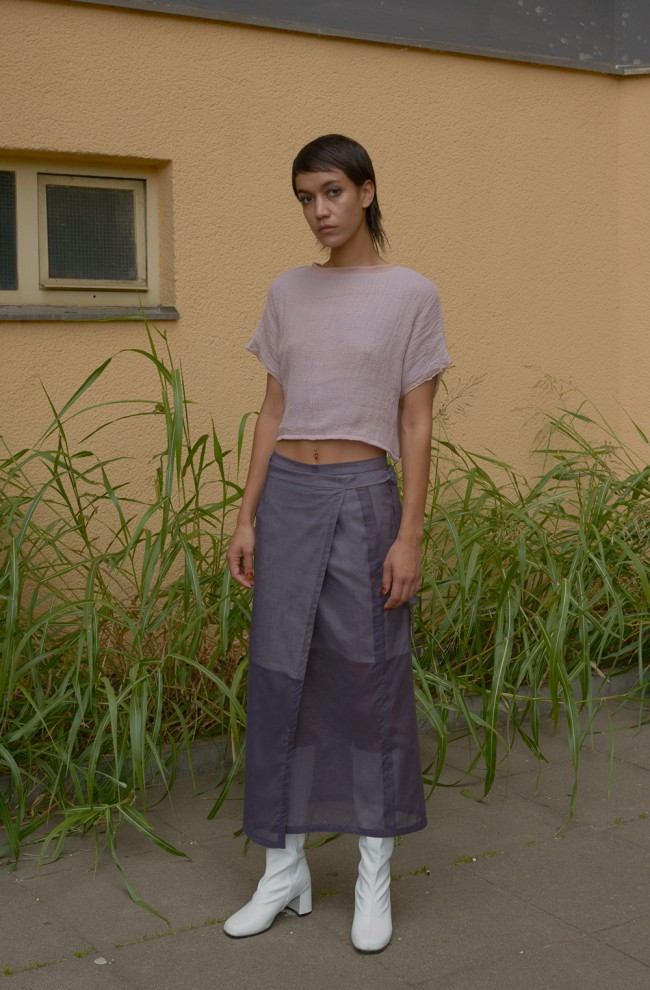
Halo Labels
http://halolabels.com
https://www.instagram.com/halolabels/
Photography Claude Gerber
text Yukiko Yamane
